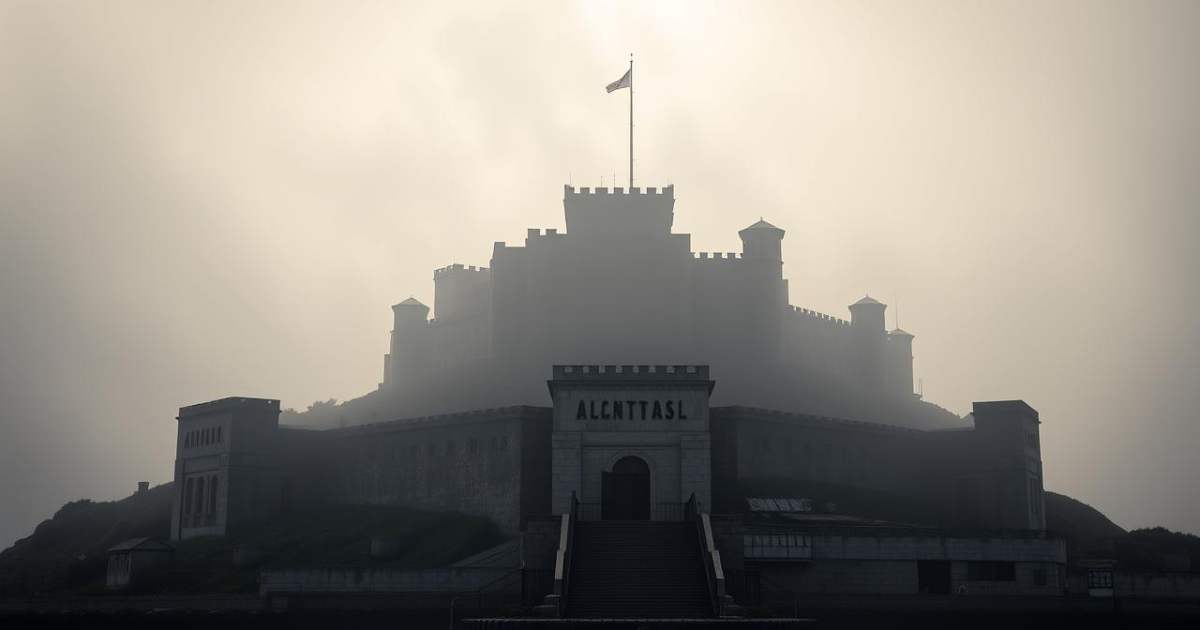Alcatraz, a former maximum-security prison, is renowned for its iconic status and intriguing history. Originally designed to house the most troublesome prisoners, Design of Alcatraz was intended to be escape-proof.
The prison’s strategic design and fortress-like architecture were meant to intimidate and contain. Its isolated location in the San Francisco Bay added to its notorious reputation.
Understanding what Alcatraz was designed for and its significance in American history is crucial to appreciating its architectural and historical importance.
Table of Contents
ToggleKey Takeaways
- Alcatraz was designed as a maximum-security prison to house troublesome inmates.
- Its strategic location and fortress-like architecture made it escape-proof.
- Alcatraz is iconic due to its historical significance and notorious past.
- The prison’s design was intended to intimidate and contain prisoners.
- Alcatraz remains a significant part of American history and architecture.
The Historical Development of Alcatraz Prison
The history of Alcatraz Prison is a story of transformation, from its early days as a military fort to its eventual use as a federal penitentiary. This transformation reflects the changing attitudes towards crime and punishment in the United States during the late 19th and early 20th centuries.
From Military Fort to Federal Penitentiary
Originally, Alcatraz Island was used as a military fort, designed to protect the San Francisco Bay from enemy ships. In 1859, it began its role as a military prison, holding prisoners of war during the Civil War. By the early 20th century, the U.S. Department of Justice deemed it suitable for conversion into a federal penitentiary, which operated from 1934 to 1963.

Why It Was Called Alcatraz and Its Original Purpose
The name “Alcatraz” is derived from the Spanish word “Alcatraces,” meaning “pelicans” or “strange birds,” which was used to describe the island by Spanish explorer Juan Manuel de Ayala in 1775. Initially, the island served as a military outpost and later as a prison due to its strategic location in the San Francisco Bay, providing a secure and isolated site for detaining prisoners.
| Year | Event | Significance |
|---|---|---|
| 1775 | Juan Manuel de Ayala explores Alcatraz Island | Named “Alcatraces” |
| 1859 | Alcatraz begins its use as a military prison | First prisoners are held |
| 1934 | Conversion to a federal penitentiary | Became a maximum-security prison |
The Architecture and Design of Alcatraz: Security Features and Layout
Alcatraz Prison’s design is a fascinating blend of functionality and security, making it one of the most secure prisons in history. The prison’s architecture was designed to be imposing and intimidating, reflecting its purpose as a maximum-security facility.

Architectural Vision and Key Designers
The architectural vision for Alcatraz was led by the U.S. Army Corps of Engineers, who designed the prison with the goal of creating a maximum-security facility that could house the most dangerous inmates. The key designers focused on creating a structure that was both secure and functional, incorporating advanced security features for its time.
Innovative Security Elements
Alcatraz was equipped with several innovative security elements that made escape attempts extremely difficult. Some of these features included:
- Watchtowers: Strategically located around the perimeter, these allowed guards to have a clear view of the entire prison yard and surrounding areas.
- Barbed Wire and Fencing: The prison was surrounded by high walls topped with barbed wire, making it difficult for inmates to climb over.
- Guard Towers with Searchlights: These towers were equipped with powerful searchlights that could illuminate the prison yard and surrounding areas at night, deterring escape attempts.
- Cell Blocks with Secure Doors: The cell blocks were designed with secure doors and gates that were controlled from a central location, preventing inmates from moving freely within the prison.
These security elements combined to make Alcatraz one of the most secure prisons in the world, earning its reputation as a place from which escape was nearly impossible.
Cell Block Design and Prison Layout
The cell block design and overall layout of Alcatraz Prison were critical components of its security. The prison was divided into several cell blocks, with cells arranged in a tiered fashion to maximize surveillance. The layout was designed to be efficient for guard patrols and to minimize the risk of inmate gatherings and riots.
Some interesting facts about Alcatraz include:
- The prison’s main cellblock, known as D-Block, housed the most dangerous inmates and was designed with solitary confinement cells.
- The prison’s isolation from the mainland and its reputation for being escape-proof contributed to its notorious status.
- Alcatraz’s design and security features were so robust that it was considered one of the most secure prisons in the United States during its operational years.
Understanding the architecture and design of Alcatraz provides insight into what makes it special and why it remains a topic of fascination. Its combination of robust security features, strategic layout, and notorious history makes Alcatraz a unique piece of American history.
The Legacy and Cultural Impact of Alcatraz
The Architecture and Design of Alcatraz have significantly contributed to its iconic status, making it one of the most recognizable landmarks in the United States. The prison’s imposing structure and innovative security features have captivated the public imagination, inspiring numerous films, books, and artworks.
So, why is Alcatraz iconic? Its notorious past, coupled with its unique design, has cemented its place in popular culture. The prison’s influence can be seen in many aspects of modern media, from TV shows to movies, often symbolizing maximum-security imprisonment.
What makes Alcatraz special is not just its history but also its architectural vision. The careful planning and execution of its design created a facility that was both functional and foreboding, reflecting the era’s penal philosophies. Today, Alcatraz stands as a testament to the country’s approach to crime and punishment during the mid-20th century, attracting visitors from around the world.
FAQs:
What was Alcatraz designed for?
Alcatraz was originally designed as a military fort, but it was later converted into a federal penitentiary to house the most notorious and escape-prone inmates in the United States.
Who was the architect of Alcatraz?
The main cellblock of Alcatraz was designed by the U.S. Army Corps of Engineers, with the architectural plans being drawn up by various architects and engineers over the years, including Reuben B. Turner, who oversaw the construction of the main cellblock.
What was the layout of Alcatraz?
The layout of Alcatraz consisted of a main cellblock, a dining hall, a library, and a recreation yard, with the cellblock being divided into several tiers of cells. The prison was designed to be highly secure, with watchtowers, guard stations, and a complex system of doors and gates.
What are 5 facts about Alcatraz?
Five interesting facts about Alcatraz include: it was originally a military fort; it was converted into a federal penitentiary in 1934; it was designed to be escape-proof; it housed notorious inmates like Al Capone; and it was closed in 1963 due to high operating costs and deteriorating facilities.
What makes Alcatraz special?
Alcatraz is special due to its unique history, architecture, and cultural significance. Its isolated location and highly secure design made it the perfect place to house the most notorious inmates, and its legacy has endured long after its closure.
Why was it called Alcatraz?
Alcatraz was named after the Spanish word “Alcatraces,” which refers to a type of bird, the gannet or alcatraz. The name was given to the island by Spanish explorer Juan Manuel de Ayala in 1775.
Why is Alcatraz scary?
Alcatraz is often perceived as scary due to its history of housing notorious inmates, its highly secure and intimidating design, and the harsh conditions faced by prisoners. The prison’s isolation and reputation for being escape-proof also contribute to its eerie and foreboding atmosphere.
Why is Alcatraz iconic?
Alcatraz is iconic due to its unique history, architecture, and cultural significance. Its association with notorious inmates, its highly secure design, and its enduring legacy have cemented its place in American popular culture, making it a fascinating and enduring symbol of crime and punishment.


